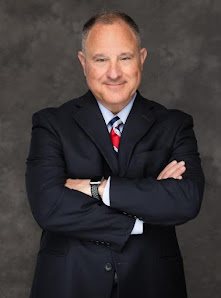Matthew T. Mangino
GateHouse Media
December 23, 2015
Imagine visiting your doctor and she recommends a
course of treatment but warns that the treatment has been applied with little
or no scientific validation and with inadequate research, assessments or
reliability.
Your doctor is telling you, let’s use this
treatment, but “neither I — nor anyone else — knows if it works.” No way — the
FDA, the Medical Society, even the National Academy of Sciences would never let
that happen.
Unfortunately, no one is preventing it from
happening on a regular basis in America’s courtrooms. The use of inadequately
tested or assessed courtroom evidence results in offenders being locked away
for years — in some cases for life.
Although there have been positive developments in
forensic science, the Innocence Project website suggests that forensic analysts
sometimes testify without a proper scientific basis for their findings.
Testimony about more dubious forensic disciplines, such as efforts to match a
defendant’s teeth to marks on a victim or attempts to compare a defendant’s
hair and hair found at a crime scene, are cloaked in science but lack even the
most basic scientific standards.
A joint effort by the FBI, the Innocence Project and
the National Association of Criminal Defense Lawyers examined the use of hair
evidence in criminal trials. The preliminary results announced this year
represent just a small percentage of the nearly 3,000 criminal cases in which
the FBI hair examiners may have provided hair analysis. According to the Washington
Post, of the 329 DNA exonerations to date, 74 involved flawed evidence
analysis.
In 2009, the National Academy of Sciences concluded
that, aside from DNA, there was little, if any, meaningful scientific
underpinning to many of the forensic disciplines.
Some would argue that the concerns with questionable
forensic evidence wash out when the state is forced to meet its overwhelming
burden of proof beyond a reasonable doubt.
However, there is psychological research that tends
to refute the notion that the prosecution pulls the heavy oar in criminal
cases, wrote Ninth Circuit Court of Appeals Judge Alex Kozinski. He recently
published an article in the Georgetown Law Journal providing 12 reasons we
should worry about the criminal justice system.
Kozinski’s former law clerk and blogger Eugene
Volokh serialized the article for the Washington Post. He wrote, we assume
juries go about deciding cases by accurately remembering all the testimony and
weighing each piece of evidence in a linear fashion . . . the reality may be
quite different. It may be that jurors start forming a mental picture of the
events in question as soon as they first hear about them from the prosecution
witnesses.
At times forensic evidence can go from bad to worse.
Chris Fabricant, director of strategic litigation for the Innocence Project
told The Associated Press, “Hair comparison analysis is practically DNA
compared to bite mark analysis.” Bite-mark analysis is the practice of
identifying alleged bite marks on human skin and then matching the pattern left
behind to a person’s dentition.
Mary Bush, a professor of dentistry at the State
University of New York at Buffalo found the two assumptions supporting
bite-mark identification--uniqueness of human dentition and human skin is a
good medium for transferring and preserving a bite-mark--are not supported by
evidence.
How does this evidence get in front of a jury?
The Federal Rules of Evidence allow expert testimony
if the conclusions are based on knowledge, skill, experience, training or
education in the techniques involved, and the specialized knowledge will assist
the judge or jury to understand the evidence or to determine a fact in issue.
The testimony must be based on reliable principles and methods, consistently
applied.
Barry A.J. Fisher, the retired director of the Los
Angeles County Sheriff’s Department Crime Laboratory, wrote in the New York
Times, the experts “should inform the court about the known error rates in the
procedure used, as well as the information about the procedures used to test
the evidence. This information will help the trial judge decide whether to let
a jury hear the expert’s opinion, and help jurors understand its reliability.”
Matthew T. Mangino is of counsel with Luxenberg,
Garbett, Kelly & George P.C. His book “The Executioner’s Toll, 2010” was
released by McFarland Publishing. You can reach him at www.mattmangino.com and
follow him on Twitter @MatthewTMangino.
To visit the column CLICK HERE








No comments:
Post a Comment